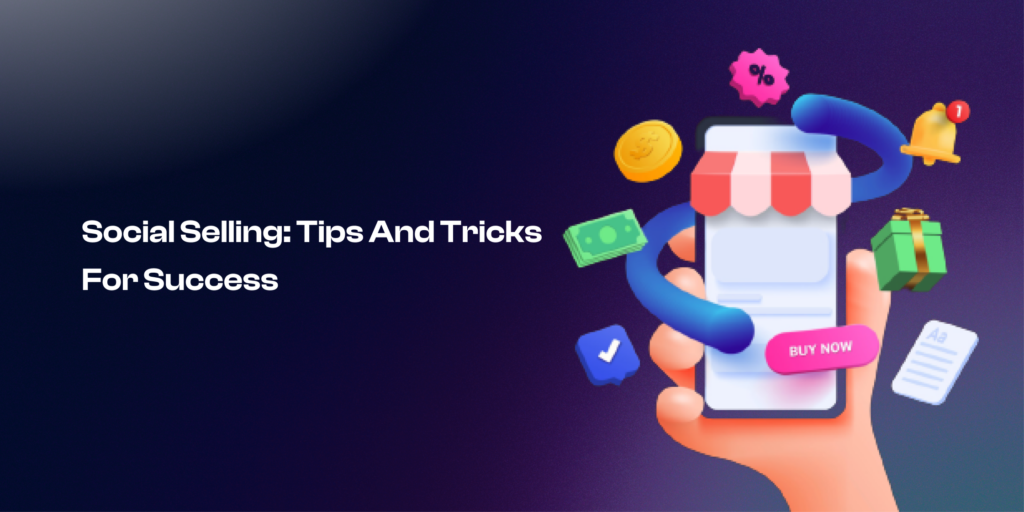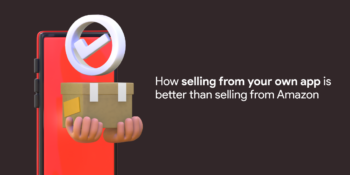In today’s digital era, social media has become an integral part of our lives. It has revolutionized the way we connect, communicate, and conduct business. Social selling, the practice of using social media platforms to engage with prospects and drive sales, has emerged as a powerful tool for businesses to reach and convert their target audience. In this blog, we will explore the world of social selling, discussing effective tips and strategies to achieve success in this dynamic landscape.
1. What is Social Selling?
Social selling is a modern sales technique that leverages social media platforms to connect with potential customers, build relationships, and ultimately drive sales. It goes beyond traditional sales methods by focusing on creating meaningful interactions and offering value through content and personalized engagement.
2. Benefits of Social Selling:
Social selling offers numerous benefits to businesses of all sizes. It allows you to:
a. Build and strengthen relationships with prospects and customers.
b. Establish trust and credibility by sharing valuable content and insights.
c. Gain insights into customer preferences, pain points, and needs.
d. Increase brand awareness and reach a wider audience.
e. Drive targeted traffic to your website or online store.
f. Stay ahead of the competition by actively engaging with your audience.
How to Choose the Correct Social Selling Platform for Your Brand
When it comes to social selling, choosing the right platform is crucial to maximize your reach and engagement with your target audience. Here are some of the main social selling platforms to consider:
LinkedIn:
- LinkedIn is the leading platform for B2B social selling. It provides a professional environment where you can connect with decision-makers, industry professionals, and potential clients. Utilize LinkedIn’s advanced search features to find and engage with your target audience. Join relevant industry groups, share valuable content, and establish yourself as a thought leader in your field.
Facebook:
- Facebook offers a vast user base, making it suitable for both B2B and B2C social selling. Create a business page and leverage Facebook groups to engage with your target audience. Share informative and engaging content, including videos and live streams, to build brand awareness and drive conversations. Utilize Facebook’s targeted advertising options to reach specific demographics and interests.
Instagram:
- Ideal for visual content and storytelling, Instagram is a popular platform for B2C social selling. Create an appealing business profile and utilize Instagram’s visual features, such as photos, videos, and Stories, to showcase your products or services. Utilize relevant hashtags and engage with your audience through comments, direct messages, and influencer collaborations.
Tiktok:
- TikTok’s unique algorithm provides social sellers with a powerful opportunity to rapidly go viral. It’s not limited to videos and memes—products themselves can become viral sensations, often selling out within days. Although TikTok’s ecommerce strategy is not as advanced as platforms like Instagram, it is continuously improving, especially through its partnership with Shopify. By utilizing TikTok, companies can connect with a younger market, track and engage with viral trends, and leverage them to create their own viral content. The platform’s immense potential allows businesses to capitalize on the viral nature of TikTok and drive sales through creative and captivating content.
Twitter:
- Twitter’s fast-paced and real-time nature makes it suitable for engaging in industry conversations and sharing timely updates. Use Twitter’s search function and hashtags to identify relevant discussions and connect with potential leads. Share valuable content, retweet industry influencers, and participate in Twitter chats to expand your reach and build relationships.
YouTube:
- YouTube is a powerful platform for sharing video content and building a strong brand presence. Create informative and engaging videos that demonstrate your expertise and address your audience’s pain points. Optimize your videos for search by using relevant keywords and tags. Engage with your audience through comments, and collaborate with other YouTubers to reach new audiences.
Pinterest:
- Pinterest is particularly useful for businesses in industries such as fashion, home decor, food, and lifestyle. Create visually appealing boards that feature your products or services and share inspirational content. Utilize keywords and hashtags to optimize your pins for search. Engage with your audience by repinning and commenting on relevant content.
Consider the following factors when choosing the correct social selling platform for your brand:
Target Audience:
- Identify the demographics, preferences, and behaviors of your target audience. Choose platforms that align with their characteristics and where they are most active.
Nature of Your Business:
- Consider the type of products or services you offer and how they can be effectively showcased on different platforms. Visual products may perform well on Instagram or Pinterest, while professional services may find success on LinkedIn.
Platform Features:
- Evaluate the features and functionalities of each platform. Consider whether they align with your social selling goals, such as lead generation, content sharing, or networking capabilities.
Competition Analysis:
- Research how your competitors are utilizing social media platforms. Identify which platforms they are most active on and assess the level of engagement and success they have achieved.
Available Resources:
- Consider the resources and time you can dedicate to each platform. It’s better to have a strong presence and consistent activity on a few platforms rather than spreading yourself too thin across multiple platforms.
Remember, it’s important to regularly analyze and measure the performance of your chosen platforms. Adapt your strategy based on data insights and feedback from your audience to ensure continuous improvement and social selling success.
Tips for Social Selling Success:
Build a Strong Personal Brand:
- In social selling, establishing a credible and trustworthy personal brand is paramount. Craft a compelling and consistent brand image across your social media profiles. Share valuable content, insights, and expertise that resonate with your target audience. Position yourself as an industry thought leader and foster trust by engaging in conversations and responding promptly to inquiries.
Understand Your Target Audience:
- To effectively sell on social media, it’s crucial to understand your target audience’s preferences, pain points, and needs. Conduct thorough research to identify their demographics, interests, and challenges. Leverage social listening tools to monitor conversations and gain insights. Tailor your content and messaging to align with their interests and address their pain points directly.
Choose the Right Social Media Platforms:
- Not all social media platforms are created equal, and it’s essential to choose the ones that align with your target audience. Each platform has its unique user base and features. LinkedIn is a great platform for B2B social selling, while platforms like Instagram and Facebook can work well for B2C businesses. Focus your efforts on the platforms where your audience is most active.
Provide Valuable and Relevant Content:
- Content is the backbone of social selling. Create and curate high-quality, valuable content that educates, inspires, or entertains your audience. Share industry insights, expert tips, case studies, and success stories. Strive to establish yourself as a go-to resource for your target audience, and they will naturally turn to you when they are ready to make a purchase.
Engage and Nurture Relationships:
- Social selling is about building relationships, not just making sales. Actively engage with your audience by responding to comments, messages, and mentions. Offer personalized responses and take the time to understand their needs. Use social media management tools to track and nurture leads. Build long-term relationships by providing exceptional customer service and support.
Leverage Social Listening and Monitoring:
- Social listening involves monitoring social media platforms for mentions of your brand, competitors, industry trends, or keywords related to your products or services. By listening attentively to conversations, you can identify potential leads, join relevant discussions, and gather insights to improve your offerings. Use social listening tools to streamline this process and stay ahead of the competition.
Collaborate with Influencers:
- Influencer marketing can be a powerful social selling strategy. Identify influential individuals in your industry who have a significant following and engage with your target audience. Partner with them to promote your brand, products, or services. Their endorsement can boost your credibility and expand your reach, leading to increased sales opportunities.
Analyze and Optimize:
- To achieve success in social selling, it’s crucial to measure and analyze your efforts continuously. Use social media analytics tools to track key metrics such as engagement rates, click-through rates, conversions, and revenue generated. Evaluate what’s working and what’s not, and make data-driven adjustments to optimize your social selling strategy.
Conclusion:
Social selling has become a game-changer for businesses seeking to connect with their target audience, drive conversions, and increase sales. By following these tips and implementing effective strategies, you can harness the power of social media to build a strong personal brand, engage with your audience, and achieve remarkable success in your social selling endeavors.











No Comments
Leave a comment Cancel